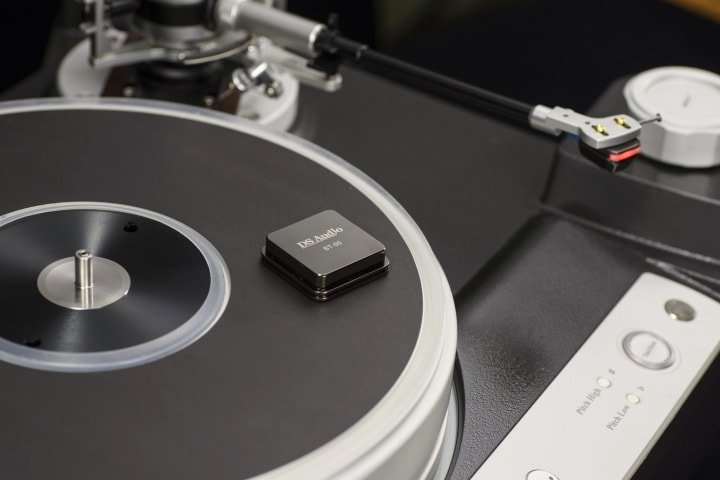St Cuthbert’s Parish Church has seen a few things in its time: infamous body snatchers Burke and Hare were regular visitors to its churchyard, the watchtower built to protect against them and other “resurrectionists” still stands; Sir Thomas De Quincy, author of Diary Of An Opium Eater, and John Napier, inventor of the logarithm, are just two of the notables interred in the churchyard; St Cuthbert’s was also where Agatha Christie married her second husband. I’m willing to bet though, that in all of its considerable history, tonight is the first time it has witnessed a thirty three piece brass band and a young lady with an assemblage of synthesisers.
The brass band is Tubular Brass led by acclaimed band leader and arranger, Sandy Smith. The young lady is Hannah Peel, here tonight in the guise of her alter ego Mary Casio. Hannah is an Irish musician and composer, noted for her Rebox and Rebox 2 EPs of cover versions played on a musical box that she programmed with hand-punched paper tape, and for last year’s electronic pop album Awake But Always Dreaming. Her latest composition, Journey To Cassiopeia is a seven part piece for brass band and keyboards that describes a journey taken into space by Mary Casio, an old lady who has decided to have one last adventure.
Beginning with Hannah/Mary’s arpeggiated synths, the band add dramatic bursts of colour and depth as Mary says goodbye to earth and we journey with her past planets and nebulae towards Cassiopeia. Peel has played in brass bands herself as a trombonist and she makes good use of the textures and dynamics that the band have at their disposal. Appropriately enough, Journey to Cassiopeia remind’s me in places of Oldfield band-mate and collaborator David Bedford’s Star’s End. The final section features a recording of Peel’s grandfather from 1928 when he was a young chorister. It’s a deeply moving finale to a very evocative piece of music and I’m looking forward to hearing the recorded version when it is released in September.
If someone was to draw a Venn diagram of tonight’s audience I’m fairly certain that it would comprise of two sets: Mike Oldfield fans and brass band aficionados, with a fairly sizeable overlap between the two. Introducing the band’s version of Tubular Bells, conductor and arranger Sandy Smith says the album was a favourite of his in the 1970s and it had always been his dream to arrange the music for brass band, long before he possessed the skills to actually do so. Sandy’s career has lead him to positions as principal horn with the Black Dyke Mills Band, Grimethorpe Colliery Band and Professor of tenor horn at the Royal Northern College of Music in Manchester. He also conducted the Brighouse And Rastrick band on their excellent collaboration with The Unthanks, Diversions Volume 2. Now he has pulled together the cream of the country’s brass players to produce a version of Mike Oldfield’s Tubular Bells that is primarily intended to work as a piece of brass band music rather than a note-by-note reproduction of the original.
The famous piano introduction is taken by the cornets before being developed by the rest of the band. The tones of cornets, euphoniums, tenor horns and trombones combine to bring a warmth to the piece, something that was somewhat lacking in David Bedford’s orchestral version. There is both delicacy and power here with some sterling work from the basses, emulating Oldfield’s agile bass guitar lines. Part one builds to the famous circular bass riff; Hannah Peel takes on Vivian Stanhall’s role as The Announcer, introducing the instruments in turn, including “Two slightly distorted baritones”as the climax builds.
Part two’s gentle opening provides a breather for the audience but not for the band. I’m not a brass player myself but even I can see that there is some tricky stuff being negotiated here. Before we know it we are full steam ahead into the “bagpipe” and “piltdown man” sections with ample support from the band’s percussion section. The main piece is brought to close by an improvised synthesiser solo by Hannah Peel over beautifully intertwining chordal and solo work from the band. The concluding Sailor’s Hornpipe starts at a gallop and gets ridiculously faster with every repeat, bringing the evening to a triumphant conclusion, and the audience to its feet. I bet St Cuthbert loved it as well.
John Scott








































































































































































































You must be logged in to leave a reply.